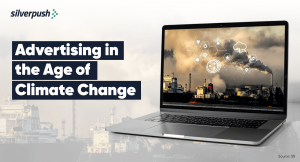Understanding the Effects of Cognitive Shortcuts on Consumers’ Perception of Ads | 25 Nov, 2021

The human brain is the most sophisticated organ of the human body. Research shows that human brain takes shortcuts when it comes to interpreting enormous information.
Although these shortcuts or cognitive schemas help in organizing and interpreting information, they can make people leave out new apposite information in favor of the information they already have, operate on preconceived notions, or unknowingly form untrue associations.
How human brain responds to ads has emerged as a topic of great interest for marketing professionals, display advertisers, and YouTube advertising companies. Research shows that reaction of people to an ad is affected by the ad’s environment, and cognitive schemas can influence the outcome of an advertising campaign. This article discusses how cognitive schemas affect people’s perception of ads.
An eye-tracking study for mapping eye movement patterns on a web page has revealed that availability bias affects people’s viewing of ads, i.e., people make an assumption about the location on a web page where an ad will be displayed on the basis of appearance of previous ads. Due to this cognitive schema, people tend to automatically not look at the ad hot spots, i.e., locations where ads usually appear.
Research shows that people give a look to an object on a web page that doesn’t interest them, then move their eyes from that area, and avoid focusing on that spot on that web page. Sometimes, they stop focusing on that area on other web pages of the same website, and may even do so on entirely different websites.
This means that if an ad of a display or video ad agency appears in a usual ad spot, for example on a sidebar, then it is important for that agency to have a great first impression of its ad, otherwise the ad may be overlooked.
Human mind considers objects on a web page that are close together, or are of the same color, size or shape, as related. Therefore, ads that are placed adjacent to unsavory content have a higher chance of being overlooked. Context plays a vital role in success or failure of an ad. By using contextual ad targeting, marketers can place their ads against contextually relevant and brand suitable content. Contextual advertising boosts the chances of user engagement.
In relation to advertising, a cognitive bias exists towards high-quality websites. High-quality websites are sites with low brand risk, whereas low-quality websites are those that have moderate brand risk. Research shows that an ad placed on a high-quality site generates a highly positive reaction, while the same ad when placed on a low-quality site, gets actively disliked. People show higher engagement on high-quality websites in comparison to low-quality sites, and this engagement also gets passed to the ads running on these websites.
While creating advertising strategies, marketers should keep in mind the above examples of cognitive schemas. In order to avoid availability bias, a brand and its partner display or YouTube video advertising company should use a tempting creative that casts a great first impression on audience. Besides attractive creatives, ads should contextually align with the surrounding content. The surrounding content should not only be safe or unharmful in order to ensure brand safety, but should also be brand suitable.

BLOGS
Super Bowl Advertising: A Month-Long, Multi-Screen Event for Brands
For Americans, there are two events that they hyped for a whole year - Football season, and waiting for football season. Football remains highly popular among Americans, with searches for "NFL Draft" and viewership numbers showing an unwavering interest in the sport. According to Google Search data, football is more ...

BLOGS
Advertising in the Age of Climate Change: The Adoption of Carbon Emission Metrics
The urgency of the climate crisis is increasing, and the media industry is no exception. While some professionals are working to reduce their direct operational emissions, there is an urgent need for common standards to be set for indirect emissions that come from digital advertising. The digital advertising industry is becoming ...

BLOGS
Complete Guide to Reaching Audience with Cookieless Advertising
What’s your alternative game plan for effective cookieless advertising? Haven't thought about it yet? The time is now! Introduction The complete year of 2022 was dedicated to cookies! Panic is setting in amongst marketers owing to mounting privacy laws and the ban on cookies, causing them to re-evaluate their strategies.







